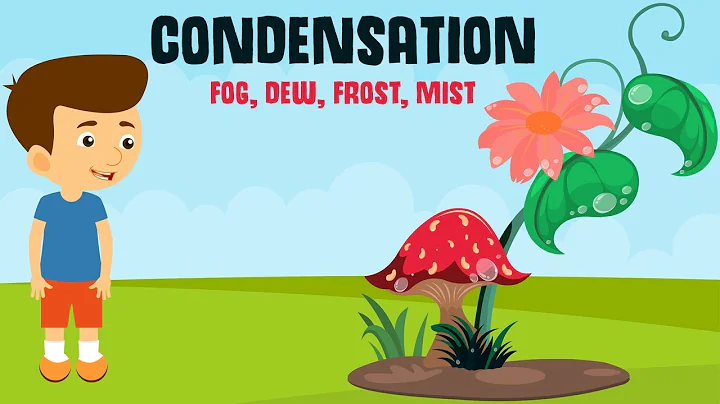Bacteria in nature often exist in groups containing many species, and complex interactions between them shape the entire community. Studies of their interactions are usually in vitro, and the results derived therefrom are difficult to directly transfer to host-relevant in vivo environments because of differences in spatial and nutritional environments. In the field of plant microbiome, most interactions currently focus on the interactions in diseased plants infected by pathogenic bacteria. The interactions of bacteria in healthy plants and the mechanisms that drive community assembly are still lacking in research.
Many interaction studies use coexistence networks, which are based on species abundance correlations. cannot prove direct interactions . Therefore, it is a more feasible solution to use synthetic communities (SynComs) with reduced complexity and community representativeness to conduct in vivo interaction research.
The Research Team of the Institute of Microbiology at the Swiss Federal Institute of Technology in ZurichJulia A. VorholtThe research team published a paper titled Mapping phyllosphere microbiota interactions in planta to establish genotype–phenotype relationships on Nature Microbiology (IF: 17.75) on May 30, 2022. The above issues were studied.

https://doi.org/10.1038/s41564-022-01132-w
Abstract
Hundreds of bacterial species coexist in host-associated microbial communities, creating opportunities for interactions between multiple species of bacteria and, in turn, the overall The community structure contributes to the formation of . The mechanisms of this self-organization among bacteria remain largely unknown. This article examines bacterial interactions in the phyllosphere microbiota. We screened the microbial interactions of in plants by adding 200 endophytes individually to a synthetic community of 15 members and tracking changes in community composition after colonization of the model plant Arabidopsis . In plants, 90% of interacted negatively with , and strains with phylogenetically similar relationships had consistent effects on the synthetic community, which provided support for trait conservation. Community changes can be largely explained by binary interactions, but we also identified higher-order interactions with more than two interacting strains. Further investigation of the prominent interaction between the two members of Actinobacteria found that Nocardioides (NocardioidesLeaf374) was reduced by two orders of magnitude in the presence of Aeromicrobium (AeromicrobiumLeaf245). We identified a potent antimicrobial peptidase in AeromicrobiumLeaf245, which can lead to the cleavage of NocardioidesLeaf374. A corresponding Leaf245 mutant strain is necessary and sufficient to restore Nocardioides colonization in plants. This suggests that direct bacterium-bacteria interactions are necessary for the original observed community changes. This study highlights the power of synthetic community screening and reveals strong microbial interactions in spatially heterogeneous environments.
Results
Select and characterize the synthetic community
The authors selected phylogenetically diverse and representative high-abundance 15 strains from the Arabidopsis leaf-derived bacterial library At-LSPHERE to form a synthetic community, called the focal community (focal community) (Figure 1). And the effects of the remaining 200 strains in At-LSPHERE and some selected model strains on the synthetic community were studied one by one. Most strains in the central community were able to colonize the leaf boundary, reaching 107-108cfu/gFW (Fig. 1c). After inoculation of the central community mixed in equal proportions of single strains, the 16S amplicon of the phyllosphere samples was measured, and it was found that the relative abundance of in MethylobacteriumLeaf88, RhizobiumLeaf371 and Chryseobacterium Leaf405 was above 10%. 9 were between 1-10% and 3 were less than 0.1% (Fig. 1d). Single-strain removal and replacement experiments indicate that the hub community is very stable against (attached).

Figure 1 a. Experimental design. b. Screened phylogenetic tree of central community members. c Colonization status of each strain in the leaf space. d. Relative abundance of each member of the central community measured by the amplicon. Global interaction map of
At-LSPHERE strains
The author connected 200 At-LSPHERE strains to the central community one by one, and obtained 15+1 members.Approximately three weeks after inoculation colonized the phyllosphere, their relative abundance changes relative to the untreated center community were recorded (Fig. 2a) . The central community members themselves were also treated as foreign inoculated strains. There was no significant change in the composition of the central community under these control conditions. Only when Leaf427 was used as the foreign inoculum, Leaf33 was reduced (log2fold change: -2.52). Taken together, these results verify the robustness of the central community.

Figure 2 a. Interaction map of At-LSPHERE (outer circle) and central community (inner circle). The red and blue connecting lines represent positive/negative interactions respectively, and the thickness represents the change fold. The outermost bar graph represents the overall effect size (PCA, PERMANOVA) on the central community. b. Pairwise inoculation changes of the interacting strains identified in a. The top represents the fold change observed in a for the central community, used as reference. Below are the fold changes for paired vaccinations vs. single vaccinations. R1 and R2 represent two replicates. c.Colonization status of MethylobacteriumLeaf88 single inoculated or double inoculated or triple inoculated with Xylophilus Leaf220 or Methylophilus Leaf408 in the phyllosphere.
57 of the 200 test bacteria interacted with the central community strains, for a total of 84 interactions. 90% of these interactions are negative, indicating their competitive effect. Strains that are phylogenetically close to have similar effects on the central community of , with most negative interactions occurring between strains that are phylogenetically close to each other (Fig. 2a). The exception is PseudomonasLeaf129, which also frequently interacts with distant strains. For at least three negatively interacting bacteria within the same genus in the central community, the authors tested their interactions and found that RhizobiumLeaf371, Sphingomonas Leaf67 and Methylobacterium Leaf88 were negatively interacting within the genus, suggesting competition among similar strains. Interestingly, some of these interactions were also present in the previous 62-member synthetic community of , indicating that these interactions exist even in more complex situations.
Except for Aeromicrobium Leaf245, all bacteria with an effect value of more than 20% interacted with at least two central strains. Serratia Leaf50 had a 27% (highest) effect size and interacted with four central strains, suggesting its powerful power to reshape communities. In fact, this strain and the plant pathogenic bacteria Pseudomonassyringae pv.tomato DC3000 are the only bacteria that can cause disease in some plants when appearing in the community (attachment). This is consistent with the report that Serratia Leaf50 is a plant pathogenic bacteria, and reveals that it is The powerful influence of central communities.
To test whether these interactions are second-order or higher-order, the authors compared paired inoculations with single inoculations and measured cfu. The 7/12 interaction could be reproduced in paired inoculations (Fig. 2b). Compared with single inoculation, RhizobiumLeaf68 and Acidovorax Leaf76 and Leaf160, which negatively interacted with the central strain, did not change significantly in paired inoculation, suggesting amensalism. Xanthomonas Leaf148 interacts with the central strain Aeromicrobium Leaf272: the abundance of Leaf272 increases when co-inoculated compared to single inoculation, while Leaf148 remains unchanged, indicating commensalism.
paired inoculation cannot capture high-order interactions, so the author did three inoculations. Because Xylophilus Leaf220 also interacts with Methylophilus Leaf408 (Fig. 2a), Leaf220 may be necessary for the interaction of Methylobacterium Leaf88 and Leaf408. Indeed the authors reproduced a comparable proportional decrease in abundance from Leaf88 and the initial screen (Fig. 2c). Interestingly, the abundance of Leaf220 increases whether it is co-inoculated with Leaf408 or Leaf88, suggesting that similar mechanisms supporting Leaf220 may be related to the fact that both Leaf408 and Leaf88 are methylotrophic strains.
Nocardioides Leaf374 –Aeromicrobium Leaf245 interaction Among the 18 inhibitory interactions of
in vitro, 2 were also identified in vivo (attachment), including NocardioidesLeaf374 (Leaf374) and AeromicrobiumLeaf245. The authors also chose this pair because Leaf374 has a 50-fold decrease in abundance in vivo (Figure 2a). The authors further verified this result by inoculating them sequentially in plants. It was found that the order of inoculation is not important, Leaf245 can reduce the abundance of even if it is already colonized Leaf374 (Fig. 3a) .Leaf374 declines were comparable for binary validation and initial in planta screening. The cell-free supernatant of Leaf245 is sufficient to inhibit Leaf374 (Figure 3b) and even lyse Leaf374 cells (Appendix). After is boiled or organic solvent is added, the inhibitory ability disappears, so the author infers that the antibacterial active molecule is the protein . The author isolated some proteins with inhibitory activity from the Leaf245 culture supernatant (Figure 3c, d) and heterologously expressed them in E. coli . Among these proteins, a putative M23 family endopeptidase (ASF05_00205) caused inhibition and cleavage (Fig. 3e).

Figure 3 a. Leaf374 monocolonized or co-colonized with Leaf245. b. In vitro interaction of Leaf374 and Leaf245 live cells or cell-free supernatant. c. Fractionate the Leaf245 supernatant by size exclusion chromatography. d. SDS-PAGE of proteins observed in Leaf245 supernatant (see c) and second biological replicate. The arrow is the protein identified by by mass spectrometry. e Antibacterial activity of purified candidate protein against Leaf374 in vitro.
To further prove that the inhibition of Leaf374 is caused by the protein in the Leaf245 supernatant, the authors constructed a loss-of-function mutant. But all fails with . So the authors used chemical mutagenesis to look for mutants that lost their antibacterial activity in vitro. More than 10,000 clones generated by EMS mutagenesis were screened and 56 mutants were identified that lost all or part of their antibacterial activity. Finally, 33 clones retaining at most 2% activity were selected for whole-genome sequencing (Fig. 4a). The ASF05_00210 locus was mutated in 40% of the strains analyzed, which encodes a 3 kb annotated activator of transcription and is located directly upstream of the previously identified bacterial lytic protein ASF05_00205 (Fig. 4b). ASF05_00205 was also mutated in one mutant strain, and the corresponding protein showed weakened antibacterial activity against Leaf374. The mutated protein is unable to lyse Leaf374 cells (attached). This important mutation is S70L. No mutations in other predicted effector proteins were found in the remaining clones identified, including those described above (Appendix). The authors also identified potential regulatory mutations in two other clones. Fractionation of the supernatants of these clones and the ASF05_00210 mutant revealed that their could no longer secrete the ASF05_00205 endopeptidase (Fig. 4c).

Figure 4 a. Re-sequencing of Leaf245 antibacterial function loss mutant. ASF05_00210 (red) and ASF05_00205 (yellow) are highlighted. b. The location of the gene pair encoding the regulator ASF05_00210 (red) and the effector (yellow) in the Leaf245 genome. c. SDS-PAGE of the active protein in wild-type Leaf245 and the corresponding partial protein in EMS mutagenesis mutant. d. Colonization of Arabidopsis by Leaf374 when alone or co-inoculated with wild-type Leaf245 or mutants.
To test whether the Leaf245 mutant no longer inhibits Leaf374 colonization, the authors conducted a co-inoculation experiment with them. It was first found that a single inoculation of Leaf245 mutants had similar colonization densities to its mutant counterpart (Appendix), indicating that the changes were not caused by Leaf245 colonization per se. Compared with co-inoculation with the wild type, Leaf374 abundance increased 20-fold when co-inoculated with the Leaf245 ASF05_00210 mutant (unable to secrete the ASF05_00205 effector), and was abundant when co-inoculated with a mutant carrying the ASF05_00205 S70G mutation with weakened effector secretion. The degree of has increased by 10 times. This is consistent with the results of in vitro inhibition experiments. However, the E_12 and E_48 mutants, which were also unable to secrete the effector ASF05_00205, did not affect Leaf374 colonization. It may be because there are different regulatory modes in plants and in vitro. The increase of Leaf374 did not affect the colonization of Leaf245 (Appendix).
In conclusion, in vivo colonization of Leaf374 is affected by the putative M23 family endopeptidase ASF05_00205. It is regulated by ASF05_00210. The author named them Nocardioideslysis-associatedpeptidase (NlaP) andregulator (NlaR) respectively.
Nlap's target range and its prevalence in other species
The authors wanted to explore whether NlaP also exists in other bacteria, so they searched the Integrated Microbial Genomes (IMG) database. The search results found Aeromicrobium types Leaf289, Leaf272 and Leaf291 in At_LSPHERE. The interaction between Leaf289 and Leaf374 was identified in the previous screen (Fig. 2a).In addition, Terrabacter spp. in At-RSPHERE was also identified. They contain nlaP and nlaR, which are genomically adjacent to each other but in opposite directions (Fig. 5a).

Figure 5 a. Genomic regions of Leaf245 and a demonstration strain containing similar gene neighborhoods compared to ASF05_00205 (nlaP, red). b. In vitro activity of candidate strains encoding nlaP and nalR homologues and a Aeromicrobium control strain without nlaP. c. In vitro inhibition of a range of actinomycetes by Aeromicrobium and Terrabacter.
All Terrabacter spp. have strong inhibitory effects on Leaf374 (Fig. 5b). The authors found that Aeromicrobiumspp lacking nlaP (Root236, Root344 and Root495) was unable to inhibit Leaf374 in vitro (Fig. 5b). Next, the author selected At-LSPHEREAeromicrobium spp. and At-RSPHERETerrabacter Root85, which contain endopeptidase activity, for their activity against At-L- and At-R-SPHERE Actinobacteria (Figure 5c). Live cells of At-LSPHERE, At-RSPHERE and a few other strains can inhibit Nocardioides spp. in a density-dependent manner. The effect of cell-free supernatant is limited to Nocardioides spp. and the very related Marmoricola sp. (Leaf446). The supernatants of AeromicrobiumLeaf245 and TerrabacterLeaf85 were more active than other strains, suggesting that they secreted more proteins or had more active proteins. This may explain the difference in the interaction strength between Aeromicrobium spp. and Leaf374 in vivo.
Finally, the author also analyzed the antibacterial spectrum of purified proteins Nlap ASF05_05375 and ASF05_12180 (Figure 3e) that inhibit Leaf374. Their inhibitory effects on both Nocardioidesspp. and Marmoricolasp. Leaf446 demonstrate the specificity of endopeptidase-dependent negative interactions for this group of bacteria and provide a basis for future studies of target specificity in this hitherto poorly studied bacterial group. provides the basis.
The corresponding author

Julia A. Vorholt is from the Institute of Microbiology, ETH Zurich, Switzerland. Research on how the environment shapes bacterial physiology, with an emphasis on plant microbiota. Functional analyzes are performed at different scales, from metabolite and protein levels to single cells, bacterial communities, plant-microbe interactions, and ecosystems. Research involves a range of complementary disciplines and methods, including metabolomics, (meta)proteomics, transcriptomics, microscopy, metabolic engineering, and new nanotechnology tools for single-cell analysis . Laboratory homepage: https://micro.biol.ethz.ch/research/vorholt.html

published 187 articles, including many articles in CNS and its sub-journals. It has been cited 18,447 times in total and has an H-index of 70. https://scholar.google.ch/citations?user=B2U54GAAAAAJhl=de
Schäfer, M., Vogel, C.M., Bortfeld-Miller, M. et al. Mapping phyllosphere microbiota interactions in planta to establish genotype–phenotype relationships. Nat Microbiol 7 , 856–867 (2022). https://doi.org/10.1038/s41564-022-01132-w
iMeta Introduction Highly cited articles High-profile drawing imageGP Network analysis iNAP
iMeta Web tool Metabolome MetOrigin Mejiyun lactation prediction DeepKla
iMeta review Intestinal flora, plant flora, oral flora, protein structure prediction
10000+: flora analysis of babies and cats and dogs syphilis rhapsody DNA extraction Nature
In order to encourage readers to communicate and quickly solve scientific research difficulties, we have established the " metagenome " discussion group , 6,000+ scientific researchers from home and abroad have joined. Please add the editor-in-chief meta-genomics on WeChat to bring you into the group, and be sure to note "name-unit-research direction-professional title/grade". Please indicate your identity if you have senior professional titles. There are also microbial PI groups at home and abroad for big bosses to cooperate and communicate with. When asking for help with technical issues, first read "How to Ask Elegant Questions" to learn ideas for solving problems. If the problem is still unresolved, discuss it in the group. Do not chat privately and help your peers.





















